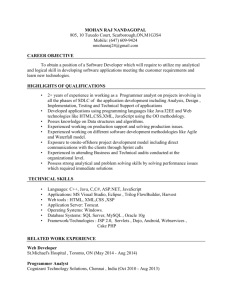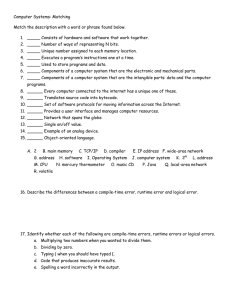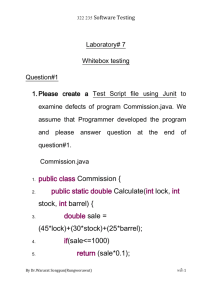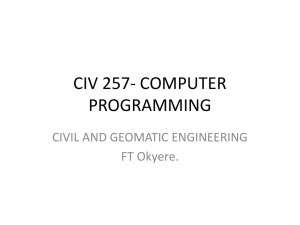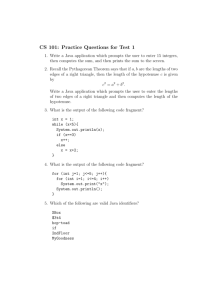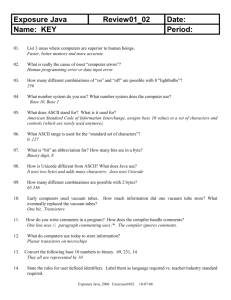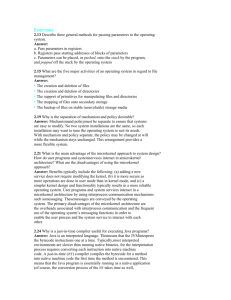Homework 1- Solutions
advertisement
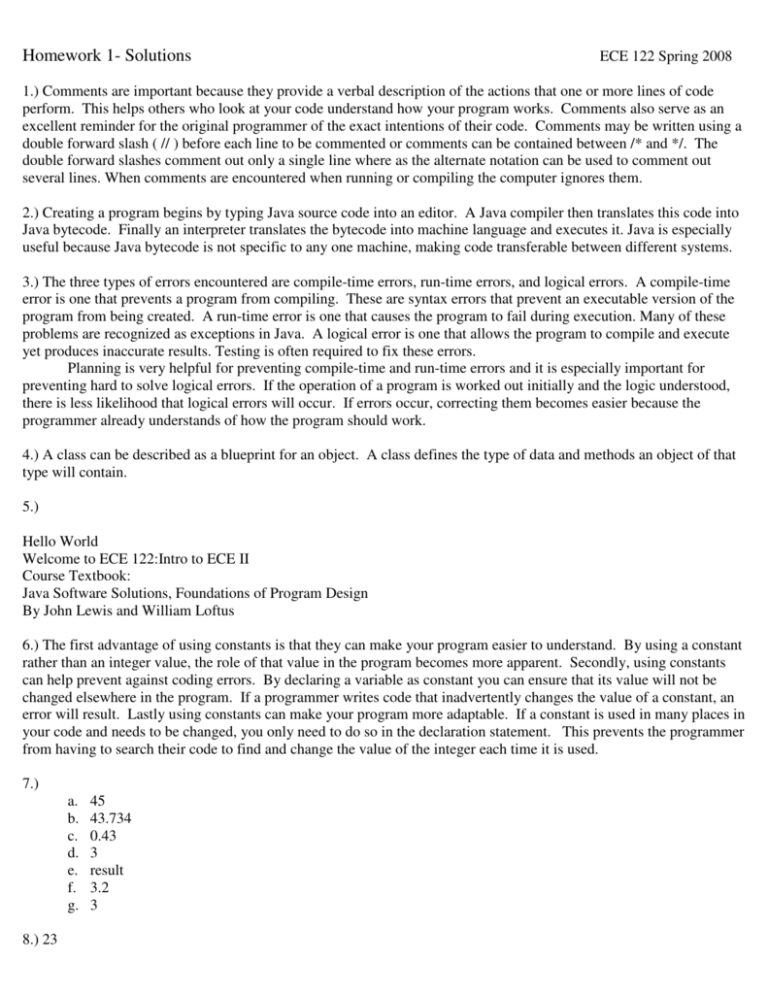
Homework 1- Solutions ECE 122 Spring 2008 1.) Comments are important because they provide a verbal description of the actions that one or more lines of code perform. This helps others who look at your code understand how your program works. Comments also serve as an excellent reminder for the original programmer of the exact intentions of their code. Comments may be written using a double forward slash ( // ) before each line to be commented or comments can be contained between /* and */. The double forward slashes comment out only a single line where as the alternate notation can be used to comment out several lines. When comments are encountered when running or compiling the computer ignores them. 2.) Creating a program begins by typing Java source code into an editor. A Java compiler then translates this code into Java bytecode. Finally an interpreter translates the bytecode into machine language and executes it. Java is especially useful because Java bytecode is not specific to any one machine, making code transferable between different systems. 3.) The three types of errors encountered are compile-time errors, run-time errors, and logical errors. A compile-time error is one that prevents a program from compiling. These are syntax errors that prevent an executable version of the program from being created. A run-time error is one that causes the program to fail during execution. Many of these problems are recognized as exceptions in Java. A logical error is one that allows the program to compile and execute yet produces inaccurate results. Testing is often required to fix these errors. Planning is very helpful for preventing compile-time and run-time errors and it is especially important for preventing hard to solve logical errors. If the operation of a program is worked out initially and the logic understood, there is less likelihood that logical errors will occur. If errors occur, correcting them becomes easier because the programmer already understands of how the program should work. 4.) A class can be described as a blueprint for an object. A class defines the type of data and methods an object of that type will contain. 5.) Hello World Welcome to ECE 122:Intro to ECE II Course Textbook: Java Software Solutions, Foundations of Program Design By John Lewis and William Loftus 6.) The first advantage of using constants is that they can make your program easier to understand. By using a constant rather than an integer value, the role of that value in the program becomes more apparent. Secondly, using constants can help prevent against coding errors. By declaring a variable as constant you can ensure that its value will not be changed elsewhere in the program. If a programmer writes code that inadvertently changes the value of a constant, an error will result. Lastly using constants can make your program more adaptable. If a constant is used in many places in your code and needs to be changed, you only need to do so in the declaration statement. This prevents the programmer from having to search their code to find and change the value of the integer each time it is used. 7.) a. b. c. d. e. f. g. 8.) 23 45 43.734 0.43 3 result 3.2 3 9.)
